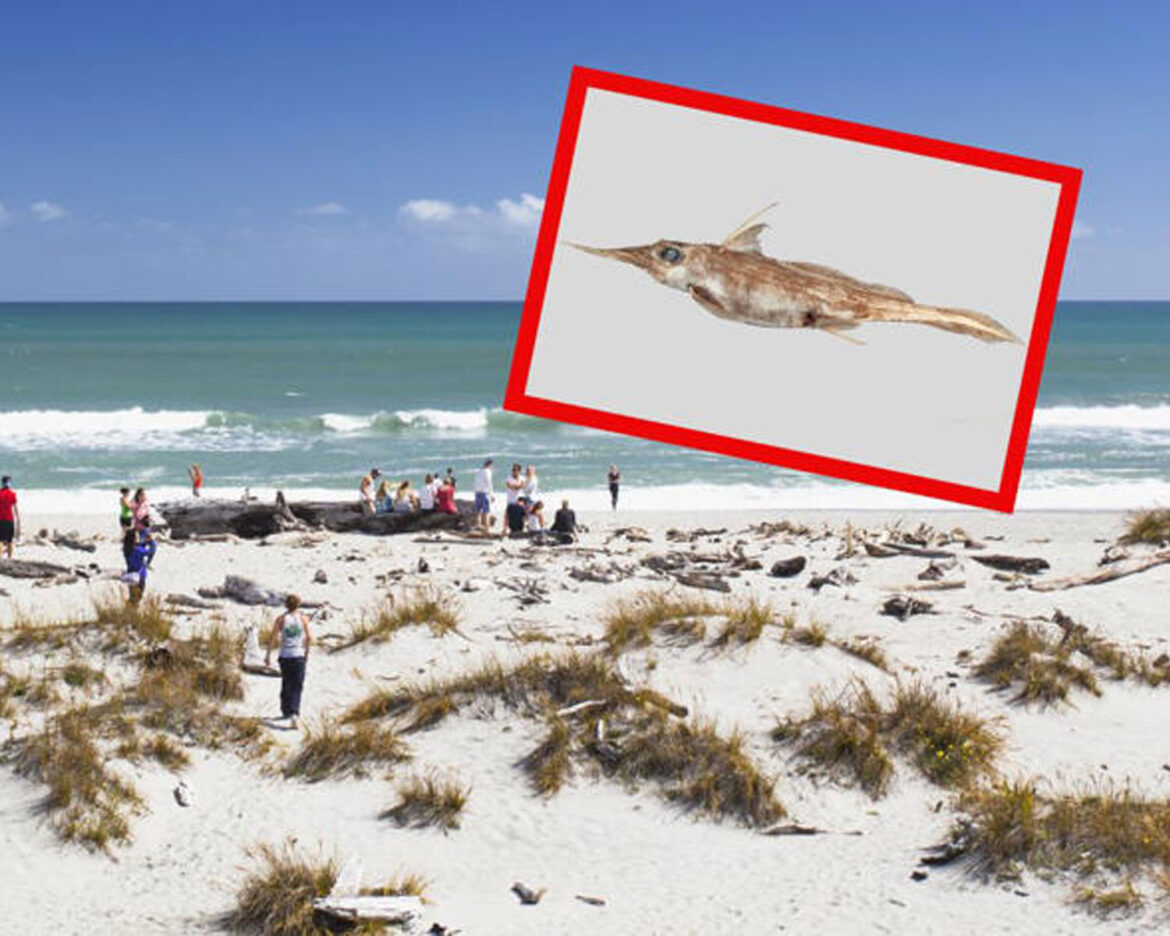A fascinating new species of ghost shark has been discovered in the deep waters off New Zealand, marked by its exceptionally long nose and whip-like tail. Scientists from New Zealand’s National Institute for Water and Atmospheric Research (Niwa) initially thought the creature belonged to an existing species. However, subsequent analysis revealed it to be genetically distinct, leading to the identification of the Australasian narrow-nosed spookfish.
Unique to the waters of New Zealand and Australia, this new species of ghost shark, also known as chimaeras or spookfish, belongs to a rare group of cartilaginous fish closely related to sharks and rays. Characterized by their smooth skin, beak-like teeth, and large pectoral fins, ghost sharks are often referred to as the ocean’s butterflies due to their graceful gliding movements through the water. They primarily feed on crustaceans such as shrimp and molluscs and are typically found at depths of up to 2,600 meters, with limited knowledge surrounding their biology and potential threats.
“Ghost sharks are incredibly under-studied; there is a lot we don’t know about them,” remarked Dr. Brit Finucci, a fisheries scientist at Niwa and a key contributor to the discovery. “Chimaeras are quite cryptic in nature – they can be hard to find in the deep ocean, and they generally don’t receive the same level of research attention as sharks.”
The new species was found in the Chatham Rise, approximately 750 km east of New Zealand’s coast. Its most distinctive feature is its elongated snout, which constitutes half of its body length, a trait believed to aid in hunting for prey. The Australasian narrow-nosed spookfish can grow up to a metre long, showcasing chocolate-brown skin, large milky eyes, and a serrated dorsal fin likely utilized for defense against predators.
Globally, around 55 species of ghost sharks have been documented, with roughly 12 of those identified in New Zealand and the South Pacific. The research team initially suspected they had encountered a new species based on morphological differences; however, genetic testing was crucial for confirming the distinction. The moment of confirmation was exhilarating for Dr. Finucci.
“It’s really neat to be able to contribute to science,” she stated. “Understanding the animal itself can feed into further research and whether they need conservation management.”
In a heartfelt tribute to her grandmother, Dr. Finucci named the species Harriotta avia: “Harriotta” in honor of her grandmother’s name, and “avia,” meaning grandmother in Latin. “I also liked the idea that sharks and ghost sharks are the old, ancient relatives of fish, and I was naming the animal after an ancient relative of mine,” she added.
This remarkable discovery not only sheds light on the enigmatic world of ghost sharks but also highlights the ongoing need for research and conservation of deep-sea ecosystems.



